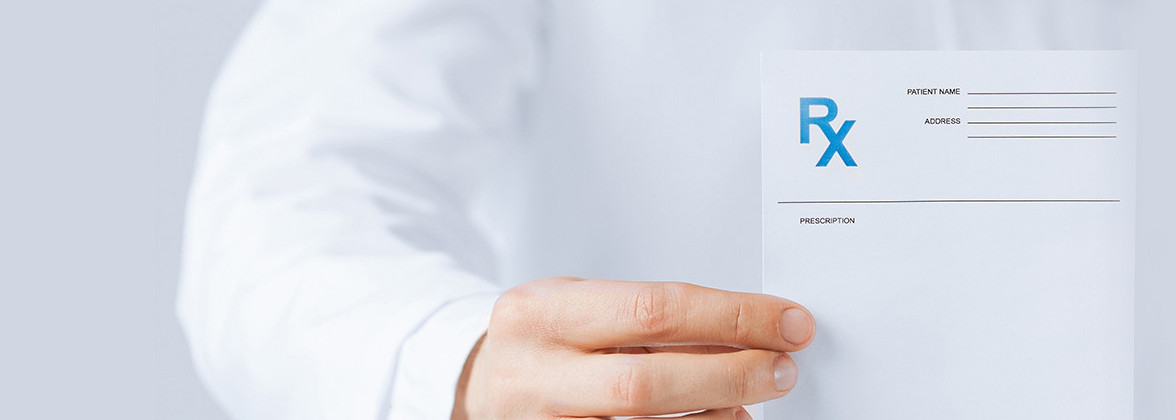The Dangers of Virtual Reality: Top 10 Health and Safety Risks of VR Devices
 Technology has been moving full steam ahead for quite some time now. The modern advancements of everything from smartphones to cars to medical tech are truly astounding. Another industry that keeps charging forward is the game and home experience sector. One of the most notable trends is virtual reality.
Technology has been moving full steam ahead for quite some time now. The modern advancements of everything from smartphones to cars to medical tech are truly astounding. Another industry that keeps charging forward is the game and home experience sector. One of the most notable trends is virtual reality.
Whether or not you have tried it before, the chances are you have heard about it. What you may not be familiar with are the potential dangers. Many people are asking just how safe these devices are and what the risks- if any- are.
Below, we discuss the top 10 dangers and risks of VR devices- from a general health and safety perspective. We included some key research into the topic and advice on how to limit the risks if you do decide to try it yourself at home.
What Is VR?
Virtual reality- or VR as it is commonly known- is a technology that allows people to completely immerse themselves in a different world. It involves wearing a headset that completely covers your ears, eyes, and nose. By doing so, all the senses are realigned to make a new reality feel, well, real!
The virtual side of things is the advanced technology that creates a computer-generated world. Digital scenes with ultra-high-definition objects, people, and images make a scenario feel very real. They are enhanced by sounds and sometimes even smells, depending on the level of the tech in use.
Who Can Use Virtual Reality Devices?
VR headsets are used for gaming, leisure, business, and simulations in various other industries. The most common example of virtual reality is the home gaming industry, followed by immersive 360-degree 3D cinema.
In the business world, simple virtual reality is sometimes used in sales pitches or for a client to experience a product. The luxury car industry, for example, can give people the feeling of being behind the wheel without risking hundreds or thousands of dollars' worth of vehicle. Almost the same tech is used for VR racing games.
Technically, anyone can use this device, but some should be cautious. Children's sets exist, but there are warnings that come along with them. People with epilepsy or high photosensitivity should not use them. Additionally, anyone with poor eye or ear health should limit use.
Overall, anyone deciding to use a VR device should read the instructions and safety warnings before starting. They should also be well aware of the potential dangers beforehand.
10 Dangers and Risks of Virtual Reality Devices
We are not saying that VR is all bad, but there are safety concerns that must be addressed. The following 10 potential dangers of using a virtual reality set should not be taken lightly or ignored. Instead, use them as caution so you can enjoy the device safely, should you choose to try it.
1: Lack of Spatial Awareness and Surroundings
The root cause of many dangers associated with VR is that you have no idea what is going on around you. That fact, for some, is enough to put them off completely.
When your sight and hearing are removed, that alone is highly dangerous, as you have no awareness of what is going on. Add in a whole new picture of what you believe to be around, and you have a recipe for disaster.
2: Chance of Falling and Hurting Yourself
Falling is the most common injury that comes from virtual reality, according to the University of South Carolina's Interactive Media and Games Division. People head to the ER with broken limbs, concussions, muscle damage, and bad bruising- all as a result of a game.
The same institution says it should be mandatory to have someone watching over you while you use a VR headset. Otherwise, the risk of injury is unacceptably high.
3: Eye Damage
If sitting too close to the TV is bad for your eyes, imagine a fully 3D world on a screen as close as a pair of swimming goggles. It may feel far away, but the screen you are watching is dangerously close to your eyes. Plenty of studies show that too much screen time can damage your eyesight, even if it is not directly in front of your face.
Professor Martin Banks of the University of California- one of the country's leaders in studies of how virtual reality environments affect our eyes and visual perception- has expressed fears over increasing myopia cases. Myopia is an eye disease associated with tablet and phone screens. According to Banks, there is a real risk that the growing popularity of VR could further grow the problem in the USA.
4: Diminished Social Awareness
It is not only physical health risks that exist with the use of VR. There are also various mental and social dangers. Spending too much time in a virtual environment can lead to social issues. In children especially, replacing real interaction with too much time spent in a world that is not real can lead to a severe lack of social skills later in life.
There is an interesting study by Good Morning Web 3 that discusses the positive and negative effects of VR on mental health and social ability. Some of the negative impacts include addiction and anti-social behavior. That said, there are some interesting counterarguments.
5: Discomfort or Disorientation
Nausea, dizziness, blurred vision, excess sweating, headaches, fatigue, and eye twitches are all types of discomfort listed as possible side effects. Any of these things can signal danger for your physical health.
If you do suffer any discomforts while using a virtual reality device, it may require medication to combat. You can get a prescription at QuickRxRefill online.
6: Loss of Hearing
Similar to the question of sight, hearing is another sense that faces risk if overexposed to prolonged periods of loud noise. Many VR games include big sounds with lots of layers. Although it is perfect for an immersive experience, it is dangerous for the delicate inner workings of the human ear.
Even the PlayStation VR health and safety manual (one of the leading home VR gaming providers) states that too much exposure could lead to damaged hearing, and they recommend conservative sound levels.
7: Chance of Seizures
The US National Library of Medicine and National Institutes of Health launched a study into the concerns surrounding VR and seizures. While the number of new cases being triggered by the use is low, there is cause for concern for those with an existing condition.
Another review by the Epilepsy Society found reason to believe that those who suffer from photo-sensitive epilepsy are a risk when using VR headsets.
8: Possibility of Psychological Effects
Video game content can be graphic, violent, and sometimes disturbing- especially for younger users. If they are immersed in it rather than watching it on a screen, it could affect their mental state.
Daydream View- a google VR product states on its health and safety page that anyone with psychiatric disorders should not use the device. It also states that some content could trigger psychological responses including heightened anxiety, fear resulting in involuntary physical reactions, and even PTSD-like symptoms.
9: Possibility of Electric Shocks
Some games now actually include shocks as part of the experience. It is a fairly new development, which is why it still raises questions. Although it may add a new level of reality into the game, it also brings a whole new set of concerns.
Faulty equipment could potentially lead to a malfunction, or a slight miscalculation could overdo it with the shock. Please note that the technology is thoroughly tested. Electric shocks are not common, but the question has been raised. Safety precautions such as keeping it away from water and not using it with exposed wires are advisable.
What is certain is that these shocks could cause problems for people with existing conditions such as heart problems. There are recommendations against people in this situation using the devices.
10: Skin Irritation or Disease
Wearing the headset for too long could lead to rashes or other skin problems. If more than one person uses the headset, the build-up of dead skin cells and hair follicles could be a health hazard.
Tips for Ensuring Safety When Using a Virtual Reality Device
There are steps you can take to limit the risks and remove certain dangers. We get it- VR is cool, but not cool enough to put your health at risk. Other than reading the manual (which is highly recommendable), here are the things you should do or not do if you want to enjoy VR safely.
Clear the Area Around You
Before you do anything, clear a space around you. It is the number one rule of safe VR use. Remove any objects that could cause you to trip or fall, take away any fragile items, and generally person-proof the area.
Try to have a one-meter radius around you that is clear of obstacles and dangers. Broken arms and black eyes are a lot more common than you might think in the virtual reality community. The scenes may be fake, but the injuries are real.
Always Use with Supervision
The biggest piece of safety advice we can give for virtual reality is never to use it without supervision. Moreover, the chaperone system built into most VR headsets helps supervise artificially, but nothing beats the real thing. Everyone, as much as possible, should use VR with a second person on-site to monitor them and make sure they are ok.
Sometimes, people get pulled very deeply into the simulation and forget there is a completely different environment around them. It helps to have someone there to make sure nothing gets broken- and nobody gets hurt. Falls and bumps are common with VR headsets, so the second set of eyes on the real world is a huge safety bonus.
It is also a precaution in case something goes wrong. The person wearing the headset could have a seizure, become disorientated or dizzy, start to feel sick, or do many other things. A second person can assist them and get them the attention they need straight away.
Do Not Use near Children or Pets
It is also a good idea to make sure your pets and children cannot wander into the playing zone and end up getting hurt. When you wear a VR headset, you are blind to your surroundings and unlikely to hear a small animal behind you. Tripping over the cat is not part of the VR playbook.
If you are using it at home- put the pets out of the room and close the door. Whoever else is home should be aware that someone is using the VR headset and make sure no small children wander unsuspectedly into the danger zone.
Having children and pets around when immersed in virtual reality is dangerous for you and them. You could bump into them, hurting you both, or they could be on the receiving end of a swinging arm. Whatever way you look at it, it is a danger that must be avoided.
Check the Device Before Wearing
Have a quick look to make sure everything looks normal before you put on the VR headset. Adjust the view focus to suit your eyes, move the straps so it sits snuggly and comfortably, and make sure nothing looks damaged.
If you suspect any damage, do not wear the headset. The temptation is to put it on and test it, but this is not advisable. There could be damage to the wiring, and it is best not to find out once it is attached to your head. Take it to a specialist to take a look. Better to be safe than sorry.
Only Use the Device When you Feel Well
All VR experts say that you get the most immersive and rewarding experience when you are in full health. Using a headset when you are tired, run-down, sick, or unhappy can amply the dangers and leave you far more exposed to health and safety risks.
Got a cold? Put the headset away and stick to the joystick. Feeling weak after a week of illness? Let yourself fully recover before you dive back into virtual reality. Even if you have just had a bad day and feel stressed or anxious, give it a miss. It is not worth the adverse side effects.
Limit the Time Spent Wearing It
As any gamer can tell you, it is easy for one round to turn into five hours. When using VR, it is best to avoid that happening. Put a limit on how long you wear the headset at a time and how often you plug in.
Overuse of virtual reality can lead to various physical and psychological problems. No game is worth messing with your mind and body. Set a timer or choose a game with a set length, so you know how long you are in the zone.
If you have children, try to be as strict as possible about limiting their gameplay. Also, keep it out of reach when you are not there to supervise and monitor the time.
The recommended time frame is no more than 30 minutes at a time, with 10-15 minute breaks between sessions. You might not think you need it, but it is a great habit to get into. This is just a minimum recommendation: everyone is different.
Control the Volume Carefully
Always check the volume setting before you start. If other people use the set, they may adjust it to something that doesn't suit you. Settings can also get changed if a child gets hold of the controls or something gets pressed accidentally.
Before you even put on the headset, go to the volume menu and put it to a low level. You can always turn it up a little if you are not getting the right vibe, but a sudden loud noise you are not prepared for could damage your hearing.
Another reason you should be cautious with the volume level is your awareness. Of course, you want the full experience- but you still want to be able to hear the real world should somebody urgently need you.
Only Use It in Safe Environments
It should go without saying that wearing a VR headset is not advisable if you are in a place of potential danger. Near a road, in an unfamiliar place, or a crowded place could all lead to dangerous situations.
Remember, your senses are blocked, and you have no idea of what is really surrounding you, so you should only do it in a safe environment that you know, and with people you trust.
Summary
Like most things, virtual reality devices are usually not dangerous for health and safety when used correctly and responsibly. There are, however, some potential side effects that require more research before we can fully understand their true impact.
In short, anyone using a VR device should be careful about how, when, and where they use it- especially if they are giving it to a child. Take precautions, limit the usage, and take the time to research the dangers.
Virtual reality is not a toy, and it is more than a game. It is slowly integrating into more and more industries. Understanding the dangers and health risks is essential to ensuring the safety of you and anyone else who tries it.

WARNING: Limitations of Online Doctor/Medical Consultations and Online Prescriptions, QuickRxRefills Cannot and Will NOT Prescribe, Dispense, or Resell any and all medications Narcotics/Controlled Substances (this policy is fully enforced by the Drug Enforcement Administration (DEA)) for Anti-depressants, Pain, Anxiety, Weightloss, Sleep, ADHD/ADD, Anabolic Steroids, Testosterone Replacement Therapy and any and all Medications that contain GabaPentin or Pseudroephedrine including non-controlled substances or any medications that are considered controversial, Off Labeled (Growth Hormone aka HGH) or recalled in nature such (i.e. Retin-A, Accutane). Furthermore, QuickRxRefills is not a substitute for an office based physician in your location nor is it a substitute for Emergency Medical Care or 911. If you do experience a "true" medical emergency your are encouraged to pick up the phone and dial 911 as soon as possible.






